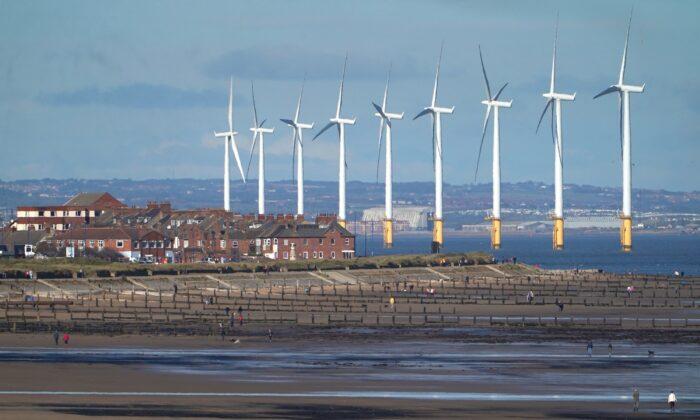Wind turbines have generated more electricity than gas for the first time in the UK, figures show.
Research from Imperial College London reveals almost a third, or 32.4 percent, of the country’s electricity was generated by on and offshore wind farms in the first quarter of the year. Gas-fired powered stations delivered 31.7 percent.
The results were up 3 percent compared to last year, despite less windy weather, because of more available wind farms.
The findings show almost 42 percent of Britain’s electricity came from renewable sources such as wind, solar, biomass, and hydro in the first quarter of 2023. Fossil fuels supplied 33 percent, with the rest of the electricity coming from imports and the UK’s shrinking nuclear fleet.
“In the space of a decade the UK has almost completely cut out coal, after relying on the most polluting fossil fuel for over a century to power our country. There are still many hurdles to reaching a completely fossil fuel-free grid, but wind out supplying gas for the first time is a genuine milestone event, and shows what can be achieved when governments create a good environment for investors in clean technology,” he said in a statement.
Energy security concerns, caused by the war in Ukraine, have pushed countries to increasingly turn to renewables, which could help to cushion electricity price rises and reduce reliance on imported fossil fuels.
There are around 11,500 wind turbines in the UK, with the start-up of more than 350 new offshore wind turbines in British waters, including the world’s biggest offshore wind farm at Hornsea Two, 55 miles off the Yorkshire coast in the North Sea.
The share of Britain’s electricity generated from renewables, which includes wind, solar, biomass, and hydropower, constituted 40 percent of the country’s electricity in 2022. The numbers were lower in 2021 owing to below-average wind speeds that year.
It added that low winds especially during prolonged periods known as “wind droughts” can have “increasingly important socio-economic implications through reducing or inhibiting wind power generation.”
Benny Peiser, director of campaign group Net Zero Watch, said, “It’s not only making electricity more expensive, obviously, because we’re talking here about renewable energy which is more expensive, costs haven’t come down, but it is a real threat to energy security as well.”
By 2030, the UK government plans for 95 percent of British electricity to be low-carbon, as set out by the British energy security strategy in 2022 under former Prime Minister Boris Johnson.
In March, Energy Security Secretary Grant Schapps announced Great British Nuclear (GBN) to enable nuclear projects and support the UK’s nuclear industry. Among GBN’s targets is to select the best small modular reactor technologies—one of the most advanced nuclear power technologies in the world—for development by autumn.
Shapps also announced kickstarting a £160 million investment to support the UK’s emerging floating offshore wind industry and port infrastructure projects.





